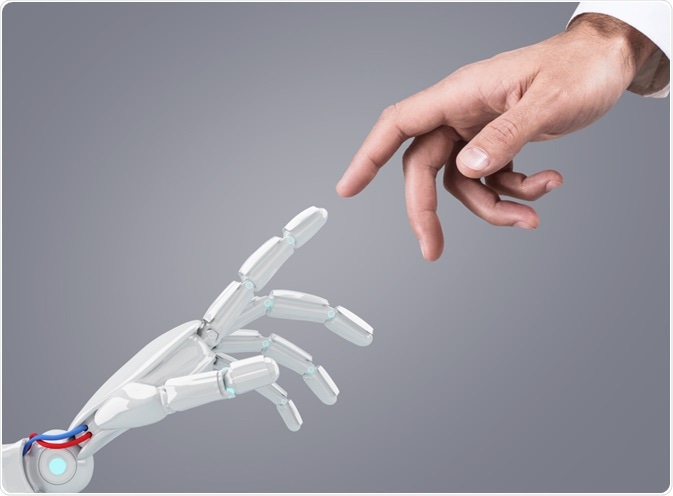Cobots and robots are the forefront of technological innovation. Cobots, or collaborative robots, were designed to work alongside and share workspace with humans, whereas robots, such as liquid handling systems, take over manual tasks by themselves. While both have benefits, their applications and likely areas of use are starting to differ.
 Image Credit: Kotin/Shutterstock.com
Image Credit: Kotin/Shutterstock.com
Robotic systems
Automated robotics systems, such as liquid handling robots or larger systems such as mass spectrometry and cell culture have been in use for some time in the life science industry. The key benefits of robots include high accuracy and uniformity, for example in pipetting amounts which need to be highly consistent in experiments like PCR preparation.
Robots also reduce contamination risk by removing operators from the environment. This reduces the human contamination which is a big problem, particularly within industrial plants and pharmaceutical industry. However, robots often require specialized personnel to set up robotics systems, in addition to programming and maintenance.
Collaborative robots (cobots)
Cobots differ from robotic systems by being designed specifically to work alongside human staff. This is enabled by, for example, easier programming, which gives more flexibility for reprogramming. They are also physically flexible with increased mobility.
Cobots have enhanced safety systems that allow them to sense the position of human operator position. This enables them to share human workspace rather than being confined behind a safety barrier. They have lighter weight and are suited to limited space. Furthermore, cobots have a lower economic burden than robots – some predictions estimate the return on investment within one year for a cobot.
Which to choose?
The availability of a number of different robot and cobot types means that researchers and companies have never had more choice when selecting instrumentation. In order to make the right choice, the user must determine whether a cobot is better suited for an application than an entirely automated robotic system.
Both cobots and robots make data acquisition easier, which can be important in life sciences as the need for large amounts of data to train artificial intelligence systems grows. Initially, robots were used within life science industries by, for example, pharmaceutical companies, but they are now moving towards flexible modular automation systems provided by cobots.
Advantages of cobots
In life science laboratories, cobots have a clear advantage. They can ensure operator safety compared to automated systems, in addition to simpler use and lack of need for specialized training. Robotics systems typically have safety barriers surrounding the machine, which complicates life science applications that require fluid changes or opening of instruments.
Cobots can minimize the materials use, and is easy for inventory management and data collection. The flexibility of cobots makes them ideal for an environment that may change in the future, whereas robots with their safety barriers are more rooted in one location in the absence of expertise.
Disadvantages of cobots
While the safety system enabling the cobots to detect nearby operators is good, it can decrease operating speeds if users are sensed in the work cell. Other drawbacks of cobots include the need for an operator.
Further Reading